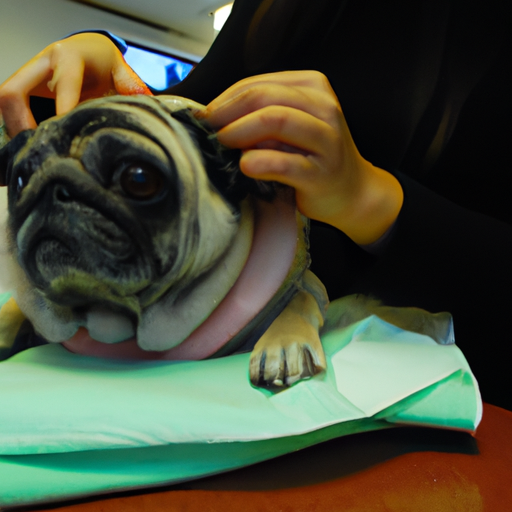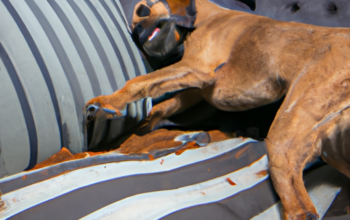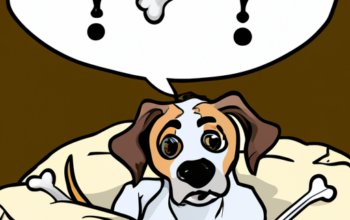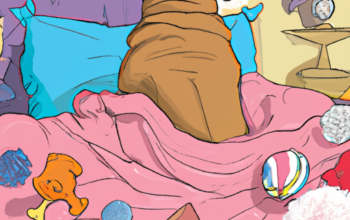Imagine noticing a disturbing, red protrusion in your dog’s eye. Heart pounding, you realize it’s cherry eye, or more clinically known as canine nictitans gland prolapse. You’re concerned about the well-being of your furry friend but anxious about surgical intervention. Don’t panic just yet! There are non-surgical treatments that can alleviate this condition and restore your pet’s comfort.
In this article, we’ll help you understand the underlying causes and symptoms of cherry eye in dogs. We’ll explore several non-invasive remedies ranging from massage therapies to long-term care strategies to prevent recurrence. Remember though, while these methods can provide relief and manage symptoms, they may not completely eradicate the condition. It’s always best to consult with a veterinary ophthalmologist for tailored advice based on your dog’s specific needs.
So let’s dive right into understanding how to treat cherry eye in dogs without resorting to surgery.
Understanding Canine Nictitans Gland Prolapse
You might feel a bit overwhelmed and worried when you first hear the term ‘Canine Nictitans Gland Prolapse,’ but it’s simply the technical term for cherry eye in dogs, so don’t let it scare you.
This condition involves the third eyelid’s gland, also known as nictitating membrane, which is vital in tear production for your dog’s ocular health. When this gland prolapses or ‘pops out,’ you’ll notice a red swelling at the corner of your dog’s eye – that’s what we call cherry eye.
Gland functionality is highly compromised with this condition, potentially leading to chronic dry eye if left untreated. Breed susceptibility plays an important role, too. Breeds like Bulldogs, Beagles, and Cocker Spaniels are more prone to developing cherry eye due to their genetic predispositions.
Recognizing the Symptoms
Spotting the signs early is crucial, and it’s often a red, swollen mass in one or both of your pet’s lower eyelids that gives away the condition. Cherry eye can be an alarming sight if you’re not prepared for it.
- Dog breeds susceptibility
- Certain breeds such as English Bulldogs, Beagles, and Cocker Spaniels are more susceptible to cherry eye due to their genetic predispositions.
-
This doesn’t mean other breeds are immune. It’s important to regularly check all dogs for symptoms.
-
Symptom severity variations
- Not all cherry eyes appear the same. Some may present as a tiny lump barely noticeable while others might resemble a large red blob covering the majority of your dog’s eye.
Remember, quick action could spare your pet from unnecessary discomfort and potential vision impairment.
Non-Surgical Remedies
It’s heart-wrenching when our furry friends are in discomfort, but fortunately, there are non-surgical remedies to explore that can offer some relief.
Topical treatments and homeopathic remedies can be beneficial for cherry eye in dogs. Topical treatments involve applying a medicated ointment or drops directly to the affected area. These may include anti-inflammatory drugs or lubricating agents to soothe irritation and decrease swelling of the prolapsed gland. Always consult with your vet before using any new medications on your pet.
Homeopathic remedies may also be considered as part of an integrative approach under veterinary supervision. Natural substances such as Eyebright or Pulsatilla have been used traditionally to support overall eye health. Remember, each case is unique, so it’s crucial that these methods suit your dog’s specific condition.
Massage Therapy for Eye Relief
Gently massaging your furry friend’s eyelid can often provide much-needed relief, easing their discomfort and showing them how much you care. This therapy uses pressure techniques to stimulate the tear gland back into its correct position. Be mindful though, this method should be performed gently and carefully to avoid causing further injury.
Massage benefits include reducing inflammation, stimulating blood flow and promoting healing. It also provides a gentle non-invasive solution for cherry eye treatment.
Below is a brief guide on how to conduct this massage:
| Step | Instruction |
|---|---|
| 1 | Calm down your pet before starting the massage |
| 2 | Close their eye gently and begin light circular movements around the affected area |
| 3 | After several minutes of massaging, let them rest |
Remember that professional veterinary advice should always precede home treatments.
Long-Term Care and Prevention Strategies
Just like maintaining a car keeps it running smoothly, long-term care and prevention strategies are crucial in averting recurring issues with your pet’s health. A primary part of this involves regular check-ups. During these visits, your vet can monitor the condition of your dog’s eyes and catch early signs of cherry eye recurrence.
Dietary adjustments also play a significant role in prevention. High-quality dog food, rich in Omega-3 fatty acids, can strengthen the immune system and enhance overall ocular health. Avoiding processed foods that might cause inflammation is advisable too.
Moreover, ensure your furry friend avoids excessive physical strain or stress, which could exacerbate the condition. By implementing these preventive measures, you’ll be well on your way to managing cherry eye without resorting to surgery.
Frequently Asked Questions
What are some other names for cherry eye in dogs?
In discussing Cherry Eye Causes and Cherry Eye Symptoms, it’s important to know that this condition is also referred to as ‘third eyelid prolapse’ or ‘nictitating membrane prolapse’ in canine ophthalmology.
Are certain breeds of dogs more prone to getting cherry eye?
Yes, some dog breeds are indeed more susceptible to cherry eye due to genetic factors. Breeds like Bulldogs, Beagles, and Cocker Spaniels have higher risk, so prevention strategies should be implemented for them.
Can cherry eye in dogs reoccur after it has been treated?
Yes, cherry eye can reoccur in dogs even after treatment. Despite successful Cherry Eye Prevention efforts or alternative treatments, the condition may return, necessitating further interventions to maintain your pet’s ocular health.
What happens if cherry eye in dogs isn’t treated promptly?
Ignoring cherry eye in your dog can open Pandora’s box. Potential complications like dry eyes, conjunctivitis, or even vision loss lurk around the corner. The neglect consequences are harsh; prompt treatment is paramount for your pet’s wellbeing.
Does cherry eye in dogs affect both eyes or can it occur in just one?
Cherry eye, caused by the prolapse of the third eyelid gland, can occur in either one or both eyes of your dog. To prevent this condition, regular vet check-ups and prompt attention to eye issues are essential.
Conclusion
In the end, treating cherry eye in dogs is much like navigating a winding road; it requires patience and care. Remember that non-surgical remedies, such as massage therapy, can offer relief. Ultimately, long-term care and preventative strategies are key to managing this condition.
Always consult with your vet for precise advice and detailed medical explanations. Your furry friend’s eye health depends on it!



